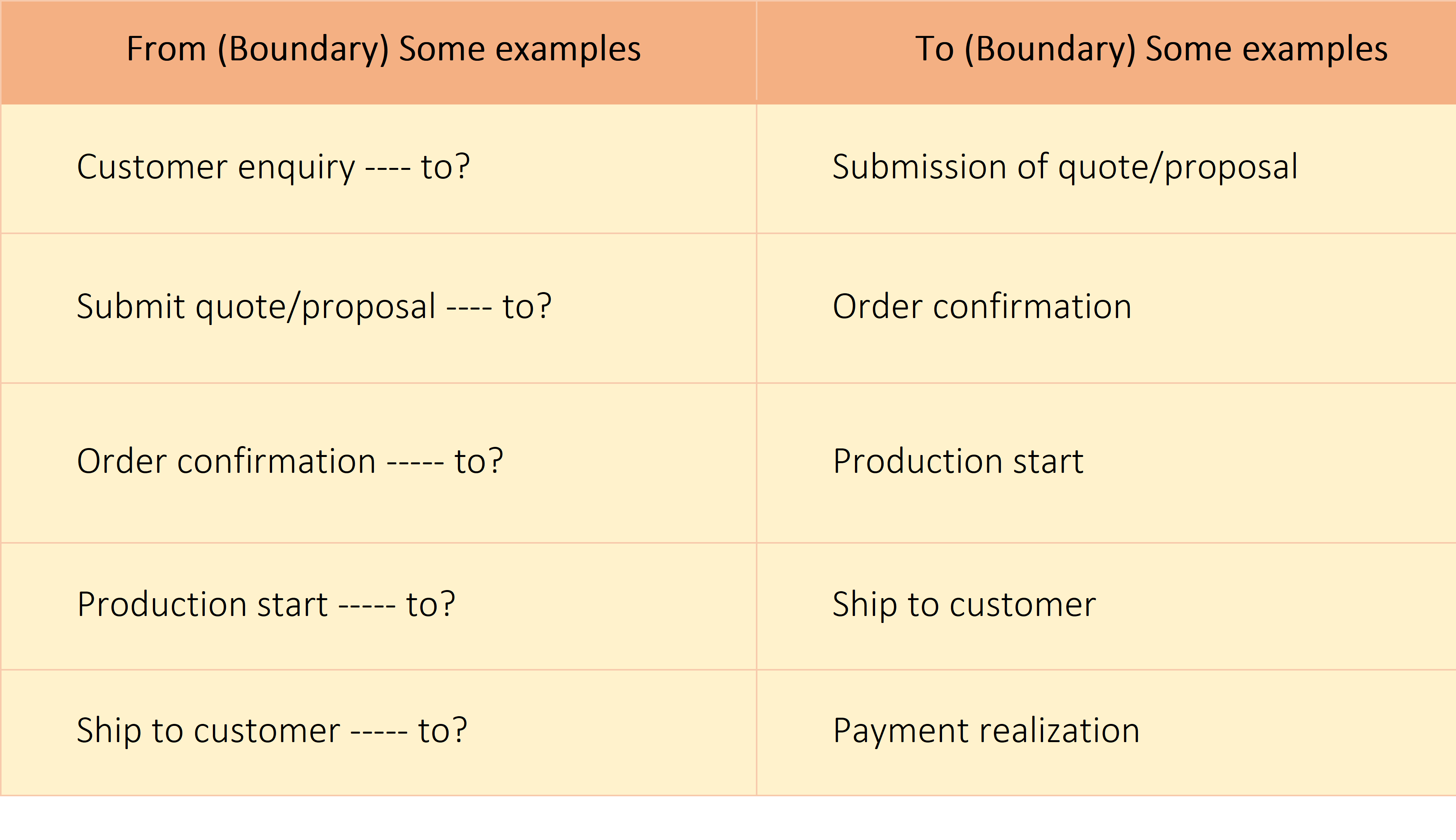Step 2 to making your current state value stream map is to define the necessary boundaries. However, before you start reading this article make sure you check out the first step to creating your CSVSM! Here’s a recap of the total number of steps that I recommend you to follow initially while making your CSVSM:

Figure 1 – Steps to construct a CSVSM
Where step 1 covers the identification of the product and process, step 2 elaborates on the construction of their boundaries.
Step 2: Define the boundaries of the process in the current state value stream map
In this step of making your CSVSM, boundaries refer to the goalposts. You need to define the starting and finishing steps for the chosen product and process.
- Define the boundaries based on what you want to achieve. Hence, ask yourself: Are they aligned with the company’s goals and objectives?
- For example, the boundaries for reducing the time to submit a customer proposal would be: ‘customer enquiry to submission of quote or proposal to customer’. Similarly, if you wish to reduce the ‘time to deliver’ to customers, the boundaries are ‘order confirmation to ship to customer’.
Table 1 – Define the boundaries for CSVSM

Click here to read the fourth step to making your current state value stream map – i.e., identifying your customer!

